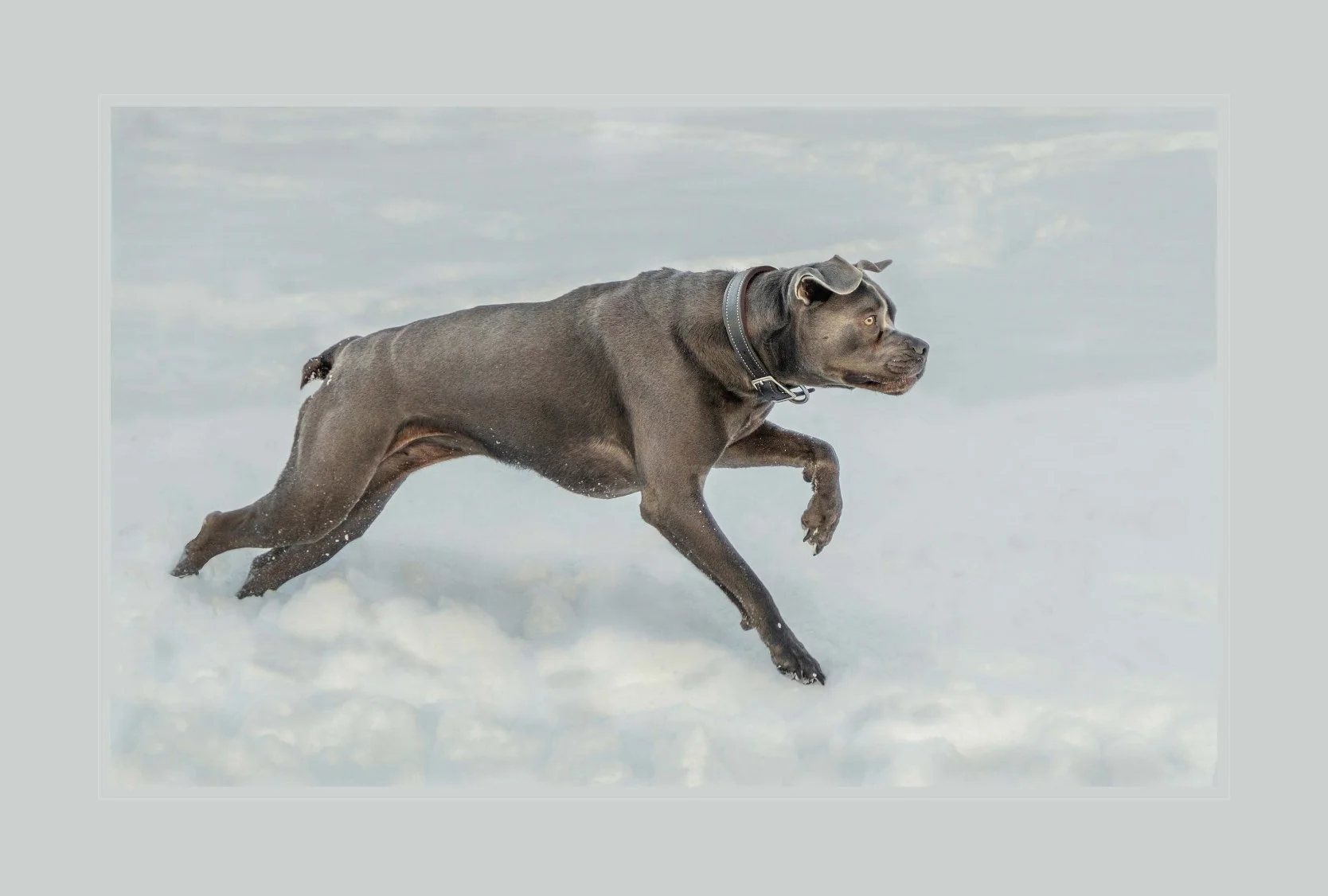Why Both Physical and Mental Exercise Are Essential for Dogs
As a pet photographer, I’ve witnessed firsthand the vibrant energy and sharp minds of dogs at their best, but I have also seen dogs who are struggling. Keeping your dog physically active and mentally stimulated is not just a part of basic care—it’s crucial for their overall health and happiness. Incorporating both physical and mental exercise into your dog’s daily life is vitally important to keeping your dog healthy and happy.
The Benefits of Physical Exercise
We all know how much doctors talk to us humans about the importance of regular exercise: it provides health benefits for the body and mind. The same is true for dogs. When you take your dog for a walk, not only do they get some cardio in, but their brain gets to process all sorts of smells, keeping their brains active and engaged. Whether chasing a ball or engaging in more strenuous exercise like agility training, physical exercise is amust.
1. Health Maintenance: Regular exercise helps dogs maintain a healthy weight, strengthens their heart, and improves respiratory and circulatory efficiency. It also helps to prevent diseases related to obesity such as diabetes and joint issues.
2. Behavior Management: A well-exercised dog is often a well-behaved dog. Physical activity burns off excess energy that might otherwise be directed into destructive behaviors like chewing, digging, or excessive barking. This is especially important with young dogs.
3. Bonding Time: The time you spend walking or playing with your dog isn’t just good for their physical health—it strengthens your bond with them, building trust and affection. You are not just a care giver and food provider, you are their pack, their family. My Maggie especially enjoys exploring new places together: it is her love language. Leo’s love language is catching the ball and he could literally do it all day long, and it is clearly the time he feels most loved.
The Benefits of Mental Stimulation
Mental exercise is just as crucial as physical activity. A fit body without a fit mind isn’t truly healthy. Mental exercise can be achieved by playing games with your dog, like letting them use their noses to find a favorite treat or toy, or by using puzzles designed just for this purpose. Maggie even loves to play hide and go seek with my grandsons. One of them will hide while I sit with her behind a closed door. As soon as I let her out, I ask her where my grandson is and the search begins. She loves this game. For Leo, ball is life, so we hide his ball and let him find it.
1. Prevents Boredom: Just like humans, dogs can get bored if their minds are not challenged regularly. This can lead to anxiety and destructive behavior. Mental stimulation keeps their minds active and engaged.
2. Enhances Training: Regular mental exercise can improve your dog’s cognitive abilities, making them more responsive to training. Puzzles and training games can help sharpen their learning skills.
3. Aging Gracefully: Mental agility is especially important as dogs age. Keeping their mind sharp can slow down the cognitive decline associated with aging, helping them stay alert and responsive longer. Yes, there is such a thing as dementia for dogs.
How to Provide a Balanced Exercise Routine
Here are some tips on how to balance physical and mental exercise for your dog:
1. Varied Walks: Change up your walking routes or incorporate new activities like hiking or jogging to keep physical exercise exciting. Use this time to practice commands or introduce agility elements like jumping over obstacles.
2. Interactive Toys: Use puzzle toys that challenge your dog to solve problems to get treats. These toys stimulate their brain and can keep them busy for hours.
3. Training Sessions: Regular, short training sessions can work wonders for your dog’s mental health. Teach them new tricks or reinforce old ones. This not only keeps their mind sharp but also enhances your communication with them.
4. Playtime with Purpose: Games like fetch, hide and seek, or tug-of-war provide both physical and mental stimulation. These games make your dog think, plan and move, offering a full brain-body workout.
5. Socialization: Interacting with other dogs and people provides mental stimulation and teaches social skills. Consider playdates or visits to a dog park where your dog can meet new friends.
Remember, the goal is to keep both your dog’s body and mind active and engaged. Balancing physical and mental exercise will help your dog live a happier, healthier, and more harmonious life. Plus, capturing these moments of play and concentration can create beautiful memories of your shared time together.
What do you do to help your dog stay healthy? Wouldn’t you love some pictures of your dog doing the things he or she loves the best? give me a call and we can book a session that incorporates their favorite playtime exercise into the session.

